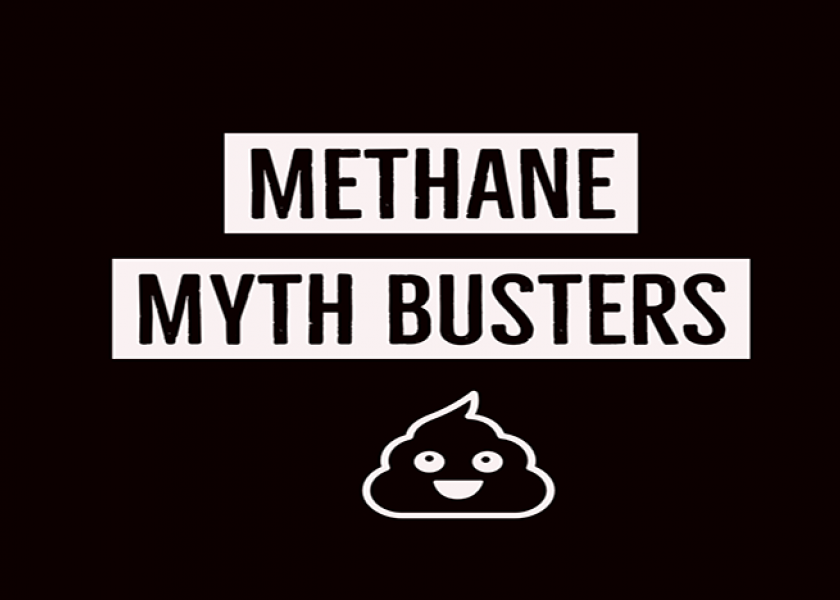Methane Myth Busters: Research Debunks Common Misperceptions

Methane has captured a lot of conversation lately. While "cow farts" have largely come and gone in the news, the stench of misinformation has not. We considered five common misperceptions surrounding methane and found research research to test these claims.

Cows are the way they are, and they’ll always be that way.
Researchers in Scotland reported methane production is moderately heritable, which means in the future, genetics could reduce methane emission. Researchers caution that because milk yield had moderate genetic correlation to methane production, breeding out methane emission indiscriminately could reduce milk production, too. However, it offers great hope for the future.

We can feed all livestock the same thing.
A review article published by researchers in the Netherlands shows dairy cattle, sheep and beef cattle respond differently to dietary changes. Researchers compared articles evaluating forage and feed additives amongst the species and described how differences in rumen morphology and physiology, as well as feed intake, could influence methane emission. Dairy cattle had larger methane reductions when fed corn silage or legumes than did beef cattle or sheep. Increasing concentrate:forage ratios reduced emissions similarly for all three species, as did adding 3-nitrooxypropanol (3NOP) and nitrate to rations. Tannin-rich forages reduced methane emissions in sheep, with too few studies to draw conclusions in dairy and beef cattle.

All measurements of methane mean the same thing.
Methane can be measured as the total amount of methane produced per day, per unit of dry matter intake, or per unit of bodyweight. For example, while researchers in New Zealand found Holsteins produced more total methane per day than Jerseys, the amount of methane produced per unit of dry matter and bodyweight was similar between the larger and smaller breeds.
The same study also compared the amount of methane emitted by cows with different feed efficiency. Highly efficient animals produced a similar total amount of methane as cows with lower feed efficiency. Researchers believe this is because methane is a reflection of total rumen activity, and efficient cows were simply able to create the same amount of rumen activity with less feed. Here, the correct unit is again important. When comparing efficient cows to inefficient cows, technically the efficient cows actually produced more methane per unit of dry matter intake, which could be misleading.

Methane emission depends on how long cows ruminate.
Researchers in the Netherlands found rumination time was not related to total methane production. Although dry matter intake and methane production were related, rumination time seemed to be based on individual cows. This could make measuring methane emissions harder, as researchers had hoped this research would allow them to simply observe cow behavior to estimate methane emissions.

Methane emission is constant across a cow’s lifetime.
Researchers in the Netherlands reported first-calf heifers had lower dry matter intake, rumination time, and methane emission than cows with two or more calves, which isn’t surprising since first-calf heifers tend to be younger and smaller. However, data isn’t consistent on whether methane emission changes across lactation. Because a cow is mobilizing bodyfat reserves for milk production, in addition to eating, it can be difficult to compare emissions to later stages of lactation when a cow is less reliant on bodyfat reserves and more on feed.
Related articles
AgDay-TV: How researchers collect methane with bags on cows







